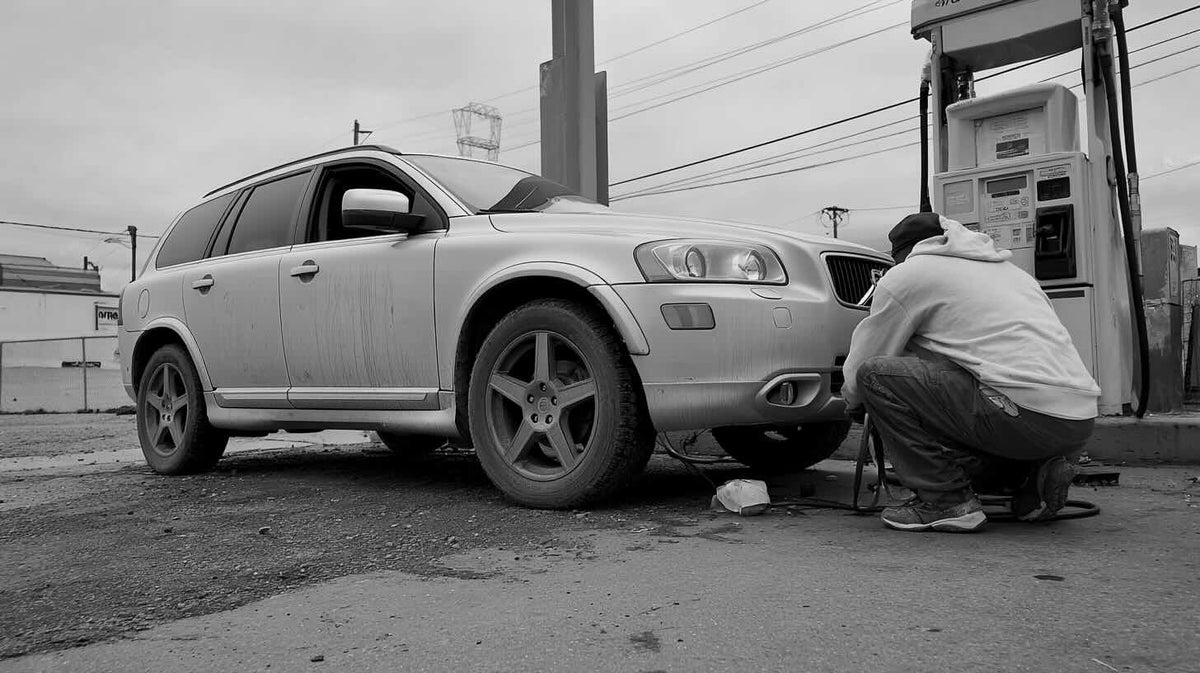
How to Use a Gas Station Air Pump Safely and Accurately
|
|
Time to read 4 min
|
|
Time to read 4 min
Whether you're heading out on a long road trip or just doing your weekly maintenance check, knowing how to use a gas station air pump is a must-have skill for every driver. Yet, many people approach it with uncertainty—How do I read the gauge? Am I overinflating? Will the valve leak?
Getting tire pressure right isn't just about comfort—it’s about safety, efficiency, and tire longevity. Overinflated tires can reduce traction, while underinflated ones wear faster and increase fuel consumption. That’s why we at Woowind believe confidence at the pump starts with knowing exactly what to do.
Table of contents
Before you even touch the air pump, make sure your vehicle is:
Parked close enough to the pump for all tires to reach
Turned off
Secured with the handbrake engaged
Next, locate your vehicle’s recommended tire pressure. This is typically found on a sticker inside the driver-side door jamb or in your vehicle’s manual. Most sedans fall between 32–35 PSI.
If you’re unsure what PSI your car tires need, check out this quick guide to proper PSI settings .
Always check PSI when tires are cold—driving warms them up, which can give a false reading.
Gas station air pumps vary. Some have digital interfaces where you can pre-set the target PSI, while others require manual inflation with real-time monitoring. Look for:
PSI setting input (if available)
Clearly marked gauge, digital or analog
A functional, undamaged hose and valve clip
Before attaching the hose, remove the valve cap and give the valve stem a quick wipe. Then:
Push the hose nozzle straight onto the valve.
Flip the lever to lock it in place (if there is one).
You should hear a short hiss—that's normal.
A loose connection can cause air to leak and give inaccurate readings, so take a moment to check the seal.
Now it’s time to inflate:
If the pump is automatic, it will stop once your set PSI is reached.
If it’s manual, monitor the gauge while inflating and stop when the needle hits your target.
Inflate in short bursts and pause to check the pressure. Overinflation can stress your tires and reduce ride comfort. Always aim for accuracy, not “more is better.”
Not sure how to read or monitor pressure? Here’s a step-by-step on how to check your tire pressure correctly .
Once your target PSI is reached:
Turn off the pump (if manual).
Unlock and remove the hose from the valve.
Quickly replace the valve cap to prevent debris from entering.
Give the tire a visual check—no bulges, cracks, or embedded objects.
Repeat for all four tires. Don’t forget the spare if you have one—it’s often the most neglected but could be your lifesaver.
We’ve all seen them—and maybe even made them. Here are some key mistakes to avoid:
Skipping PSI check: Guessing can lead to under- or over-inflation.
Trusting a damaged pump: If the hose is frayed or leaking, find another station.
Forgetting to recheck after driving: Tire pressure can shift with temperature and speed.
Inflating when hot: Always check tire pressure when tires are cold for the most accurate reading.
Following these tips not only improves driving safety—it helps extend your tire lifespan and fuel economy.
While gas station pumps are useful, they’re often unreliable, hard to read, or inconveniently located. That’s why more drivers are switching to Woowind’s LP1 smart inflator .
The LP1 is:
Rechargeable and cordless (no outlet or lighter needed)
Equipped with a precise digital PSI gauge
Built with an auto shut-off feature to prevent overinflation
Compact enough to store in your glovebox or backpack
If you’re ready for full control at your fingertips, check out our full lineup of car air pumps or explore our collection of electric air pumps designed for everyday confidence and convenience.
Your vehicle’s recommended PSI is usually printed on a sticker inside the driver-side door or in the owner’s manual. Always check pressure when tires are cold for the most accurate reading.
Some gas station gauges are worn out or inaccurate due to heavy use. It’s a good idea to double-check with a personal tire pressure gauge or use a portable digital inflator for more reliable readings.
Most car tires take 1–2 minutes to inflate depending on how low they are. Watch the gauge closely and stop once you reach the target PSI. Avoid guessing or overfilling.
Yes. Overinflated tires can reduce grip, cause uneven wear, and increase the risk of blowouts—especially in high heat. Always inflate gradually and stop at the correct PSI.
Portable inflators are cleaner, more accurate, and available anytime. Many offer features like automatic shut-off, digital PSI display, and USB-C charging—making them more convenient and safer for regular use.
At Woowind, we make inflating smarter, safer, and simpler—because control shouldn't end at the steering wheel.